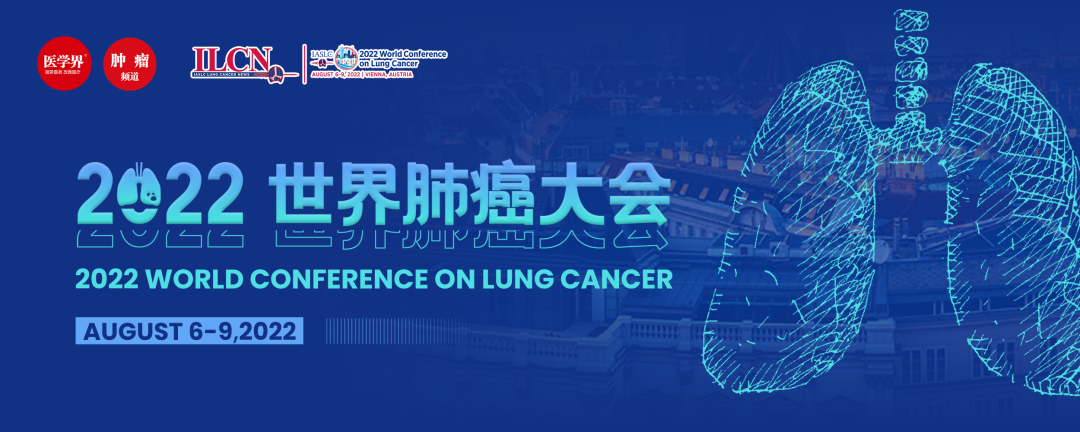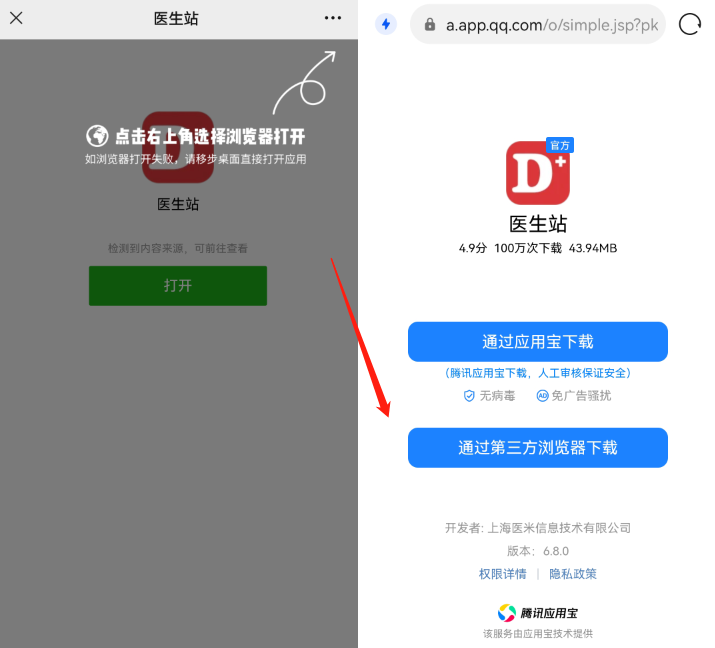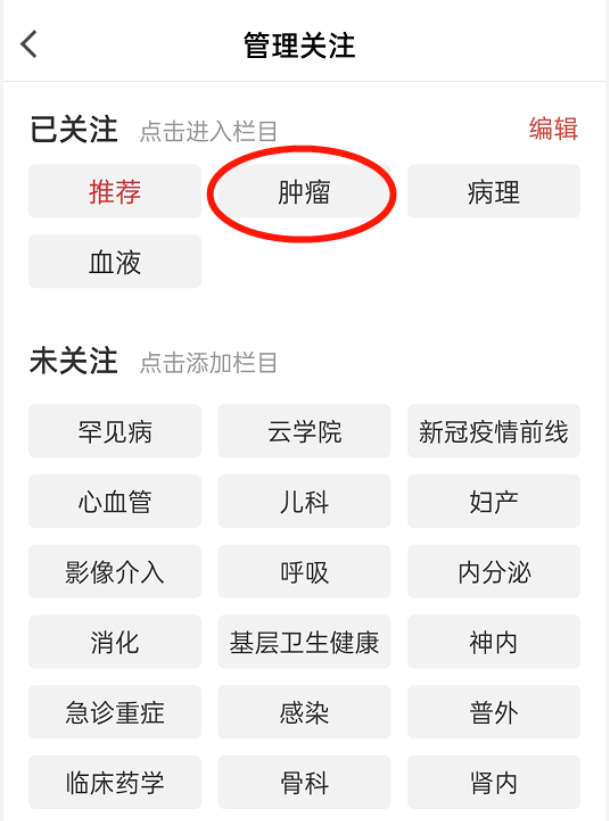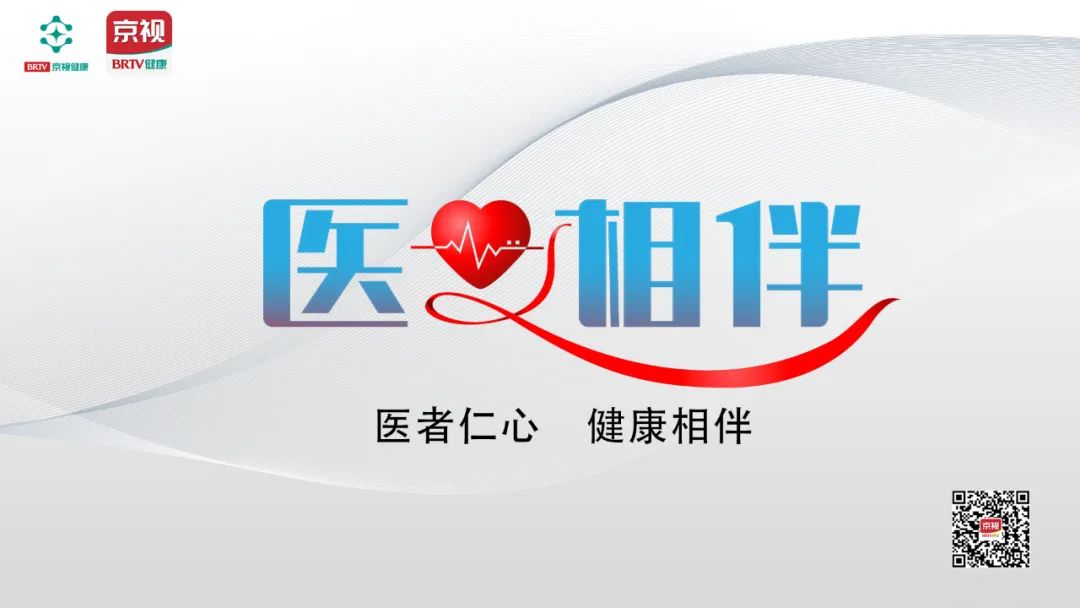Can dual-target therapy overcome EGFR-TKI resistance?2022 WCLC targeted therapy important progress inventory
Author:Cancer Channel of the Medical Time:2022.08.07
*For medical professionals for reading reference

Hope of lung cancer targeted therapy
The International Cancer Research Association (IASLC) will host the 2022 World Lung Cancer Conference (WCLC) in Vienna, Austria from August 6th to 9th. As we all know, targeted therapy is an important part of the treatment of lung cancer. The development direction of treatment is to develop drugs with good efficacy, low toxicity, and lasting beneficiaries, and powerful response plans after drug resistance.
For the targeted therapy of EGFR mutations non -small cell lung cancer (NSCLC), whether there is a solution that has continued to benefit for a longer effect, and there are new methods after drug resistance. Let us follow the medical circles of tumor channels and see the new progress of WCLC first.
Summary:
1. Exploration of EGFR targeted drug treatment: dual -targeted reversal mutations, extend the clinical beneficiary period
2. Exploration of EGFR targeting drug resistance: dual -targeted+chemotherapy overcome drug resistance
Exploration of EGFR targeted drug treatment: dual -targeted reversal mutations, extend the clinical beneficiary period
量1.1 China Power: Saverinib combined with Oshitinib reversed drug resistance, specific group ORR49%
In the NSCLC treatment of EGFR mutations, MET amplification and protein excessive expression is one of the mechanisms that use EGFR tyrosine kinase inhibitors (EGFR-TKI). Reversal resistance.
2022 WCLC's Chinese power first appeared. Protocol features, explore optimization of MET detection schemes and expression values, paving the way for EGFR precision medical care.
AHN et al. Reported the phase II clinical trial Savannah data (Abstract EP08.02-140) as of August 27, 2021. For the 193-entry group Osidinini, patients can evaluate patients. 300mg once a day with Oshitinib 80mg once a day. As a result, the safety of Savidinib and Oshitinib is consistent with the previous known security.
Clinical MET mutation testing is usually detected by FISH to detect MET amplification (MET copy number ≥5 and/or MET: CEP signal ratio ≥2 [FISH5+]) or IHC detected (≥50%tumor cells in tumor cells 3+ [IHC50+]). High MET mutation level is MET copies ≥10 (FISH10+) and/or IHC3+stain ≥90%tumor cells (IHC90+). 34%of the patients are the level of high meta mutation.
Savannah results show that with the increase of MET mutation levels, the treatment response rate has also increased. Among all patients, the objective relief rate (ORR) is 32%(95%CI: 26%-39%), and the duration of the duration of the mid-position is 8.3 months [95%CI: 6.9-9.7], and there is no progress in the median. The PFS period is 5.3 months (95%CI: 4.2-5.8).
Among patients with high meta mutations (n = 108), ORR is 49%(95%CI: 39%-59%), and the median Dor is 9.3 months [95%CI: 7.6-10.6], MPFS is 7.1 is 7.1 A month (95%CI: 5.3-8.0).
Among the EGFR mutations NSCLC patients with IHC90+and/or fluorescence in situ in situ in situ of MET detection immunohistochemicals, ORR49%was observed, and the IHC/FISH of MET can be used as a biomarker. In the future, the EGFR-TKI resistance of MET mutations will be screened in the future. Drug reversal treatment beneficiaries.
量1.2 The highlight of China's power: Saffron and Sanovo
The highlight of the 2022WCLC China power is the other two III clinical trials of Saivininib and Oshitinib, Saffron and Sanovo. Saffron reported by Professor Lu Shun and Sanovo reported by Professor Wu Yilong. Cancer channels for the medical community will report another article. Welcome to follow.
初1.3 Reversal EGFR mutation: AMIVANTAMAB combined with Lazetinib
Yangsen Pharmaceutical's AMIVANTAMAB is a dual -antibody -targeted drug of EFGR and MET, which can block signal conduction that EGFR and MET -mediated, and guide immune cells to target activation and resistance EGFR, MET mutations and amplification tumors. Essence The US Food and Drug Administration (FDA) approves AMIVANTAMAB to treat patients with metastasis NSCLC patients with a transit -positive (EGFREX20INS+) plug -in NSCLC after receiving the failure of platinum chemotherapy. Lazetinib is an EGFR-TKI, which is approved for the treatment of EGFR T790M mutant positive or transferring NSCLC that had previously received EGFR-TKI treatment.
For patients who are initially treated, the combined use of EGFR inhibitors and MET inhibitors will theoretically delay the occurrence of drug resistance and extend the benefits of treatment. Phase I Chrysalis clinical trial, the purpose of evaluating AMIVANTAMAB and Lazetinib for NSCLC patients for EGFR mutations. In this WCLC, Cho, etc., the latest results of the patient group (Abstract P1.16-01). The first governance team recruited EGFR outer appearance 19DEL (EX19DEL) or NSCLC patients with L858R dot mutation (L858R) on No. 21. Among the 20 patients who entered the group (62.5 years of age, 55.0%of women, all Asians), 11 are EGFR EX19DEL, and 9 are NSCLC with L858R. As of November 2021, the median follow-up time was 22.3 months (4.2-25.3), and it has not yet reached a median relief duration (MDOR) and no progressive survival (MPFS). At the end of the data, 14 patients (70.0%) were still without progress and continued to be treated, of which 9 (9/11,81.8%) were EGFR EX19DEL and 5 digits (5/9, 55.6%) L858R. There are two other patients with L858R continue to be treated after progress.
The safety of the combination of medication is consistent with the previous reports, and no new security issues are found. Five patients (25%) have a severe degree of treatment related to the treatment of level 3. Seven patients were reduced due to Trae. The most common cause is rash (n = 4). A patient reports that treatment is interrupted due to inter -quality lung disease.
Eighteen of the 20 patients were treated for initial CTDNA testing, and 15 of the 18 patients were detected to detect EGFR mutations. At the same time, the detected body cell mutations include TP53 (n = 10), EGFR amplification (n = 1), MET amplification (n = 1), and Jak2 V617F (n = 1). On the first day of the third course of treatment, the 15th initial CTDNA EGFR mutant -positive patients were not detected again.
At the median follow -up of 22.3 months, the patients who received the joint treatment of AMIVANTAMAB joint Lazetinib did not reach MDOR and MPFS. 70.0%of patients were not progressing and were undergoing treatment, and they could reverse the EGFR mutations of all patients. Such encouraging data has promoted the clinical trial of phase III Mariposa, comparing the joint schemes of amivantamab and Lazetinib with Oshitinib to compare whether they can defeat Olkininib and become the first -line treatment of EGFR mutations NSCLC patients Program.
EGFR targeted drug exploration: dual -targeted+chemotherapy overcome drug resistance
After Osicinib resistance, chemotherapy is usually carried out for platinum schemes. As mentioned above, for patients who are first -diagnosis, the use of EGFR inhibitors and MET inhibitors may delay drug resistance and extend the beneficiaries of the treatment. After EGFR-TKI resistance, replacement of MET inhibitors with another EGFR inhibitor may reverse drug resistance. Yangsen Pharmaceutical AMIVANTAMAB and Lazetinib dual-targeted drugs and platinum chemotherapy schemes started the clinical IB/II test of Chrysalis-2.
Marmarelis et al. Reported the data of Chrysalis-2 LACP (Lazetinib, AmiVantamab, Karplatin, Permesus) group data (Abstract MA07.04). The LACP group recruits EGFR mutations NSCLC patients with EGFR mutations in the EGFR-TKI ending of EGFR-TKI. The patients who have received the median lines with a medium number of 2 (1-3) lines in the group, including Osicinib (N = 14), Ji Ji, Ji Ji, Ji Nonicib (n = 3) and Afutinib (n = 3). As of the release of WCLC, at least 3 months of follow -up, 10 patients were partial to alleviate PR and 7 patients with stable SDs, and 3 patients with PD.
The most common treatment related adverse events is infusion -related reactions (73.3%), decreased neutral granulocytes (66.7%), rash (46.7%), platelet decrease (40.0%), fatigue and nausea (each 33.3%). Five participants were suspended for treatment, and the two were due to severe treatment related adverse events, and the three were made due to the progress of the disease.
Dual-targeted and chemotherapy combined with chemotherapy has produced a high overall response rate among patients with EGFR-TKI drug resistance. The safety of LACP solutions combined with drugs is consistent with the data of previous single drugs, and no new security issues are found. With the support of the above data, Yang Sen is currently recruiting patients in Phase III Mariposa-2 clinical trials to evaluate the efficacy of LACP schemes in the progress of disease progress in NSCLC patients after EGFR mutations.
Conclusion:
The increasingly advanced tumor precision medicine will change the life trajectory of the EGFR mutation recurrence and the cure non -small cell lung cancer patients. We are optimistic about the prognosis of these patients. 2022 WCLC's new progress in various potentials, all on the medical tumor channel, welcome to follow, welcome to subscribe, welcome to share, welcome to reprint. references:
[1] IASLC 2022 World Conference on LUNG CANCER ABSTRACTBOOK
The cutting -edge information you want
Please pay attention to the doctor station 注

1. Scan the QR code below
2. Click to download the app

3. Open the doctor station app and click on the upper right corner


4. Find the tumor in the channel

And follow
Download the doctor's station app and subscribe anytime, anywhere ~
The first release of this article: the medical world tumor channel

Author of this article: Zhang Xiang
Review of this article: Yu Jiangyong Beijing Hospital
Editor in charge: Sweet
- END -
Manage blood sugar, sugar friends must know three problems

Zhengzhou Central Hospital Mao YuFor sugar friends, controlling blood sugar is the...
Today at 15:00, the medical science science live broadcast

Medical and Heart is a live broadcast section of medical online science populariza...